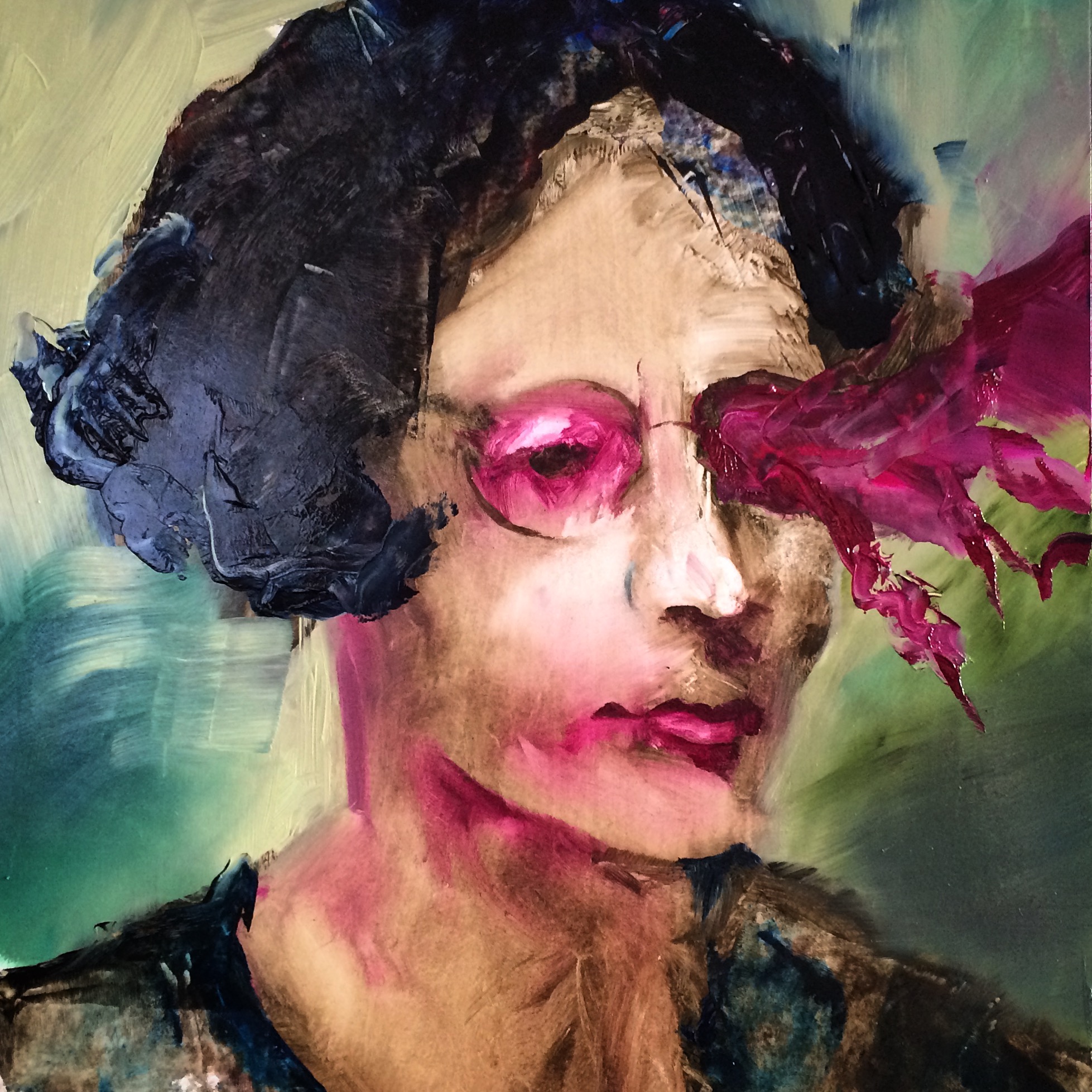“Out of the crooked timber of humanity no straight thing can ever be made.”
Kant was born in the town of Königsburg in East Prussia and although he never left he became internationally famous in his lifetime. An academic he didn’t publish until he was 57 when in 1781 he released one of the greatest books of all time, Critique of Pure Reason. Others followed in a rush of highly original works with a depth of ideas that made them very difficult to understand. His work is the gateway to the most significant developments in philosophy beyond David Hume.
Immanuel Kant, 2018 Oil on Canvas 61x61cm (Available for Sale)
Before Kant most thinkers took it for granted that the limit imposed on what human beings can know is set by what there is: we can, in principle, go on finding things out until in the end there is nothing left to know. Kant, developing an idea of John Locke’s, insisted that our knowledge is also limited by our five senses, our brains and our nervous system. Therefore, anything that this apparatus can deal with is capable of being an experience for us. But anything it cannot deal with can never be experienced for we have no way of apprehending it, but it doesn’t mean it doesn’t exist. So there are two limits on what we can know; what exists and our ability to perceive it.
Kant’s doctrine means that we can never know for certain that anything exists which our bodily apparatus cannot apprehend; which rules out knowledge of the existence of God and immortal souls. However, it does not rule out the existence of God, only knowledge of the existence of God. Consequently he demolished so-called proofs of the existence of God and since Kant it has been accepted by serious thinkers that the existence of God cannot be proved or disproved.







